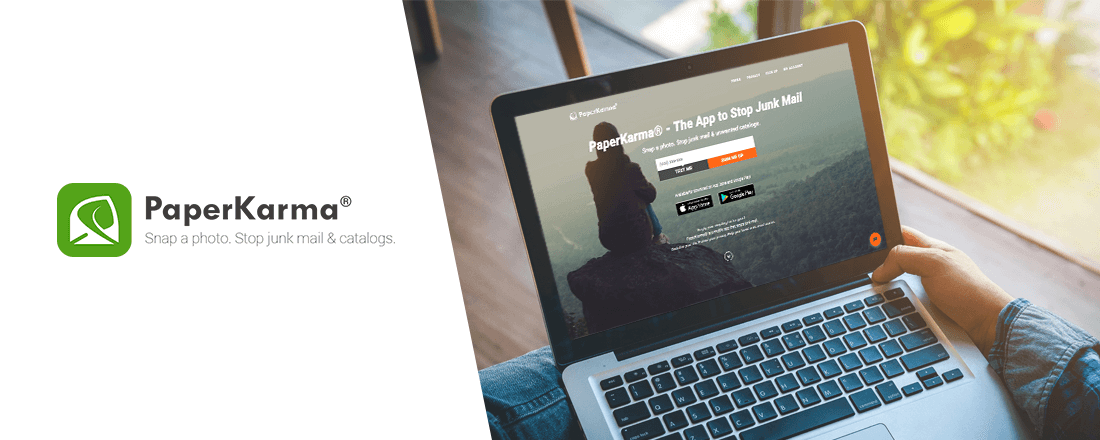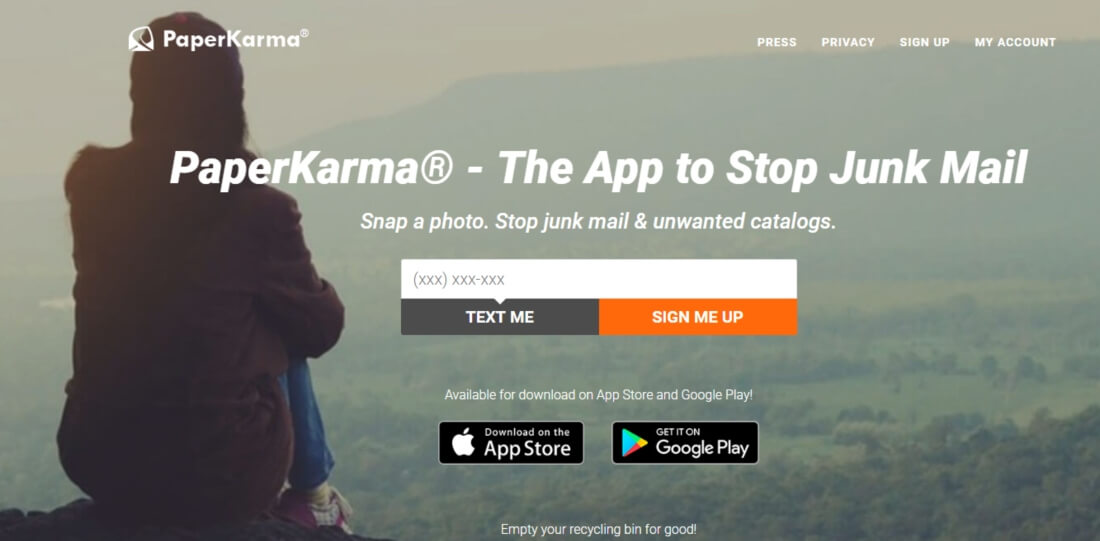
The digital revolution has made our lives so much easier in so many ways that it’s impossible to list them all here. Smartphone apps let us order food, hail cabs, meet someone special, search for apartments, apply for jobs and more with a few swipes and a tap of the screen—and that’s just for starters.
Back in 2011, when the on-demand economy was newly burgeoning, two Seattle-area engineers were drowning in junk mail. Catalogs, postcards, coupons, special offers and other mass mailings seemed endless—and more unnecessary than ever before. When they decided it should be just as easy to unsubscribe from direct mail marketing lists as it was to get pizza delivered, PaperKarma was born.
The idea behind PaperKarma couldn’t be simpler, says the company’s CEO, Jeff Treichel. Using the PaperKarma app, all you have to do is take a picture of the piece of junk mail you no longer wish to receive and tap once to submit an opt-out request.
Treichel explains what happens next: “Behind the scenes, image recognition technology identifies the mailer and matches it with a manually verified database.” Automated processes then route opt-out requests according to the protocols laid out by the company that originated the unwanted mailing. The PaperKarma app gets rid of up to 90 percent of junk mail on average, says Treichel.
A Hit, a Miss and a Successful Relaunch

PaperKarma was an immediate hit, and in 2012 it was featured as one of Apple’s “top five apps” of the year, alongside AirBnB, Uber and TaskRabbit. Soon after, a large Silicon Valley firm acquired the company, but it didn’t prove to be the right fit.
When it became apparent that PaperKarma’s original, very loyal user base was unhappy with the company’s new direction, says Treichel, “the current ownership and management group appealed to acquire and re-launch the app with its original focus.”
Since the re-launch, PaperKarma’s subscriber base has tripled, says Treichel. What’s more, it’s done so organically, entirely through word-of-mouth. Treichel says that “investments in upgrading the technology, customer service and user-experience itself” are behind the app’s explosive growth.
Who Uses PaperKarma?
Treichel says PaperKarma’s users fall into a few distinct categories. If you’ve recently moved, you’re probably familiar with the cascade of home improvement flyers, new appliance advertisements and local retailers sending special offers and coupons. Families and individuals who’ve just settled into a new home make up a large percentage of PaperKarma’s customers.
Baby Boomers and older folks who are possible targets of fraud are another demographic that finds PaperKarma useful. “We’ve seen that oftentimes it’s the children or caretakers of this generation that subscribes their parents to our service out of concern that donation requests and marketing offers are being mistaken for bills—and paid for,” explains Treichel.
A third category of PaperKarma users are people who want to reduce the amount of junk mail they get out of concern for the environment. “Environmentally conscious individuals detest the fact that 85 billion pieces of direct mail end up in trash or recycling, with over 40 percent of them never even having been opened,” says Treichel. “What’s more, China has almost completely throttled the import of recycled materials from the United States, essentially making paper recycling unprofitable. This means most junk mail is now ending up in landfills.”
Treichel adds that people concerned with identity theft and privacy also use PaperKarma, in an effort to keep their personal information secure.
Looking to the Future

Up next, PaperKarma is working on building relationships with direct mailers, who are eager to optimize their campaigns so their mailings land in the mailboxes of people who actually want them. “Go figure—they actually don’t want to waste money on printing, postage and distribution to uninterested recipients,” laughs Treichel.
The company has other big things in the works as well. “We’re working on upgrading the image recognition algorithms for a faster, better and more accurate experience.” They’re also wondering whether a rewards and perks system might be in their future.
“Is an app that’s meant to get rid of advertisements any place for digital ads?” asks Treichel. “So far we’ve thought not. That’s why we operate on a monthly subscription model. But we’re happy for our customers to enlighten us if we’re wrong!” Currently, a subscription to PaperKarma is $1.99 a month after a free trial period, and customers can cancel at any time.





